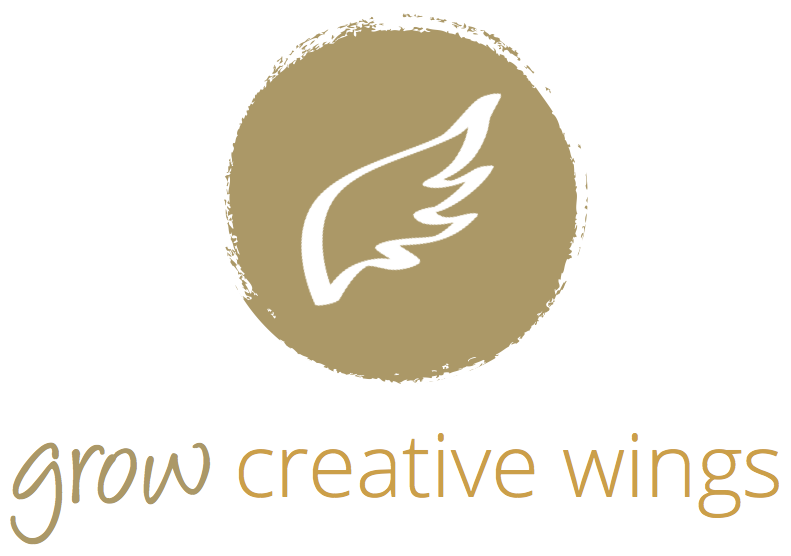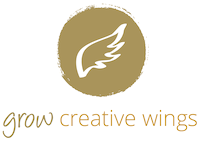How to Identify Themes
in Your Art to Create Meaningful Work
Themes are elusive. There’s no guaranteed 10 Step Method to discovering your creative theme.
But it's not mission impossible!
I’m going to share 4 powerful techniques to help you find the theme of your work regardless of medium. These techniques can help you find not just the theme of your current piece, but understand the theme that ties together your entire body of work.
In the previous article on Themes we looked at why understanding the theme of your creative work can be the impetus for making work that resonates with your audience and differentiates you as an artist.
But, of course, this begs the question, how do you find out what your theme is?
Kick off your shoes, grab a cup of tea and I’ll begin with a little story about how I first discovered themes in my work...
How I discovered themes in my art
Some years back I made seven collage-paintings based on the seven chapters of the Handless Maiden story as it appears in the book by Clarissa Pinkola Estés, Women Who Run With The Wolves.
For those of you not familiar with the story, it’s a folk tale about a girl whose father unwittingly sells her to the Devil. The underlying theme of the story is about healing our relationship with our creativity.
The ‘handlessness’ of the maiden represents what happens when we lose touch with our creative self.
At that time in my life, my relationship with my creativity was rocky at best so the story seemed heaven-sent to help me.
Each painting took about a month and as I completed each one, I was rewarded with a dream revealing the meaning of its imagery and how it related to my creative life.
The more the themes revealed themselves, the more the series gained coherence.
By the end of the story I had not only completed a body of work that changed forever the way I engage with my creative practice but one that spoke to my audience.
It was the first time in my life as an artist when people came up to me with tears in their eyes and thanked me for the work I’d made. (Wolf at the Door was the second piece of mine to evoke tears.)
Those people got the themes in those paintings at a visceral level.
They saw their own creative lives mirrored there.
And they understood the lessons that it had taken seven months of painting for me to grasp.
That is the power of theme at its best.
It was a profound and moving experience. Not only did it help me understand and heal the destructive relationship with my own creativity, but it made me realise the importance of understanding theme within the context of my creative work.
(The technique I used to interpret my dreams, is the last in the list of four techniques below.)
One of my favourites of my Handless Maiden series: No. 5: Unfinished Revolution
60 x 90 cm, mixed media on MDF. © Cherry Jeffs, 2011
So without more ado, it’s time to begin digging for your themes.
Below I’ve outlined all the techniques I use to mine for themes with great results. Pick, choose and combine as you see fit.
“Perhaps there is a valuable insight or pattern that might prove helpful in your work. Record it, and consider why it came to mind. Is there a pattern, or something potentially valuable to learn from it? Is there a theme to tap into?”
For full instructions for each technique, download this eBook
4 Techniques to Discover Creative Themes!
Techniques for discovering your theme
A. Dig for overarching themes in your existing work
Gather together the pieces of work that you've made so far that most resonate with you. The ones you love or feel most attached to.
Once you have assembled your images, free-write about what you see. Don't think too hard about it. Just respond intuitively.
If nothing comes to you, try turning all the images upside down. Now what do you see?
If you don’t like writing, use the Creative Dialogue technique below.
B. Use Creative Dialogue to unearth any type of theme
Creative Dialogue is a powerful way to access your subconscious feelings about the theme of your work.
You can use it to help discover either your overarching theme or the theme of a single piece of work.
To dialogue with your subconscious do a stream of consciousness drawing in response to a question such as,
“What is the theme of this piece of work?” or
“What is the overarching theme of my work?”
Draw only marks and lines - many or few, heavy strokes or light, short marks or long, and any combination of these.
See what emerges!
C. Theme-spotting with a secret Pinterest board
Pinterest is a great resource for discovering themes that are important to you.
If you already use Pinterest, I bet you can find clues to themes that interest you just by browsing over what you’ve pinned.
Make this a bit more intentional by creating a hidden Pinterest board name ‘Theme’.
(Again you can use this to discover your overarching theme or the theme of a single work.)
Pin anything you see that resonates with you. Don’t over-analyse. You’re looking for clues not a final definition. Just go with whatever images appeal to you and trust that in time their relationship/meaning will become clear to you.
D. Use a Dream Journal to discover your theme
Keep a physical or digital notebook by your bed and write down your dreams as soon as you wake up.
There’s lots of dream interpretation techniques out there, but if you want to try the one I use, download 4 Techniques to Discover Creative Themes.
Read over your interpretation and see if you can understand the complete picture of what your subconscious was telling you.
Sometimes it won't be clear until a day or two after and "aha!” you’ll get it!
With practice you’ll find you naturally begin to intuit what your dreams are saying to you although, of course, some are more difficult than others.
How themes help you understand your creative work
Using these techniques can not only help you find the theme of your current piece of work but over time can help you understand the theme that ties together your entire body of work.
Themes are often difficult to pin down...You can't force them to appear but if you stay open, your theme will eventually make itself known.
Hint: It might not what you’re expecting it to be!
Don’t forget to get your eBook





